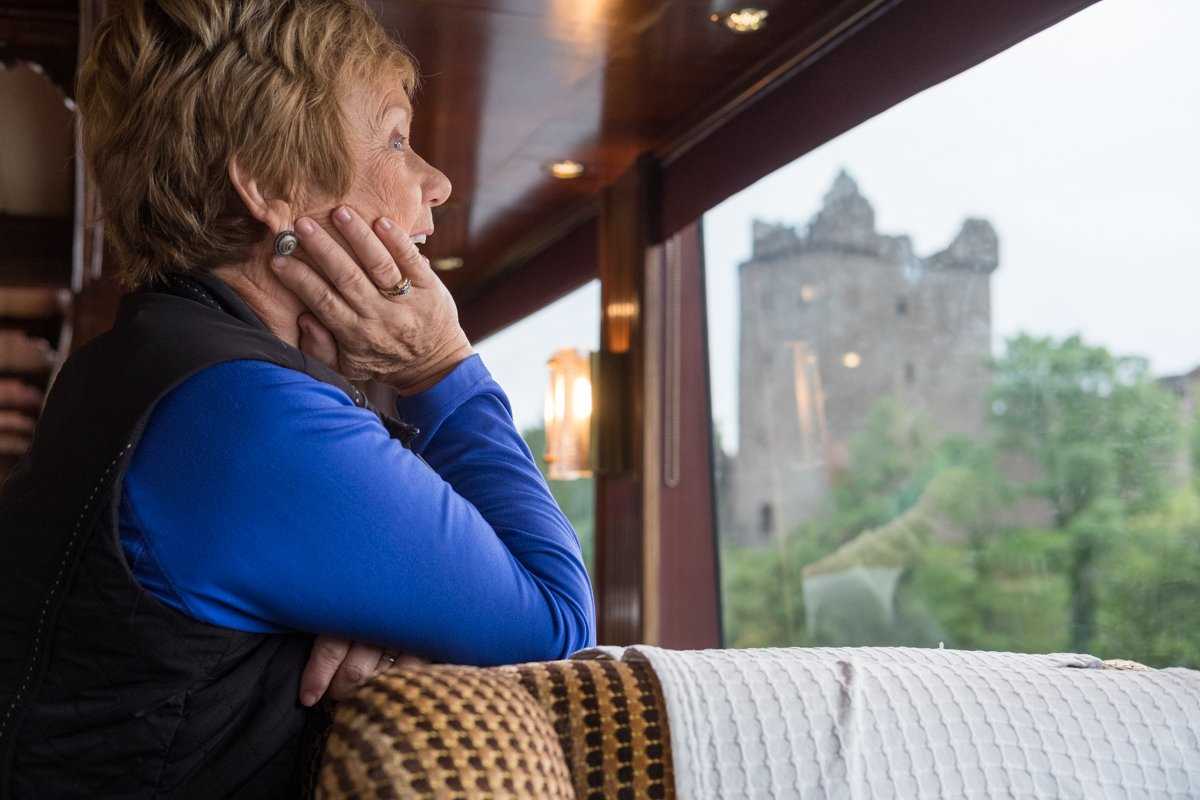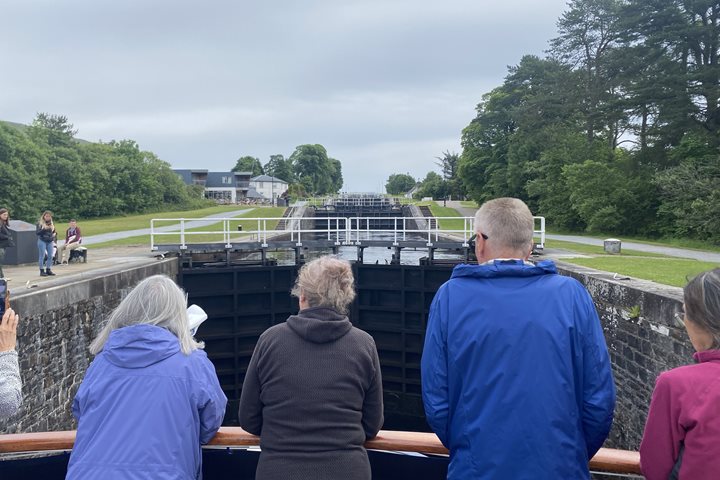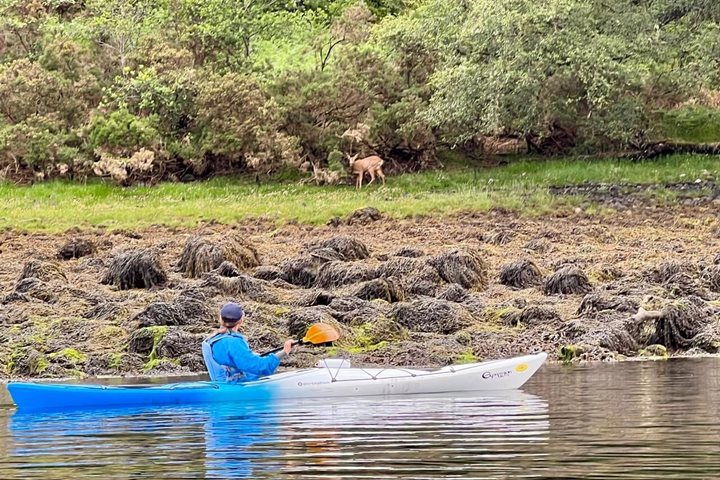Over breakfast we cast off at the top of the flight of five locks around which the small settlement of Fort Augustus has grown up to descend 40 feet into Loch Ness. Loch Ness is the largest body of inland water in the British Isles and is deeper than the North Sea. Fort Augustus is named for the brother of King George II who led the victorious army against the Jacobite forces at Culloden.
At the mid-point of our transit across Loch Ness is Urquhart Castle. It was here that St. Columba performed a remarkable miracle, bidding an impeding monster to retreat into the depth of the loch, the first recorded sighting of Nessie, now much in evidence as a souvenir around Loch Ness. The site at Urquhart became a Norman stronghold, continuously occupied down the centuries until destroyed by the government so before it fell into the hands of the Jacobites.
In the afternoon we visited the Culloden battlefield. The Battle of Culloden in 1746 was the last armed civil conflict on British soil. For centuries since the Reformation of the 1530s, a landed gentry class that had benefitted from the confiscation of the monastic estates supported a Protestant monarchy in the face of any threat of Catholic tendencies. Protestant monarchs, including William of Orange, had been imported, to displace a rightful monarch who had Catholic leanings. When the last of the Stuarts, Queen Anne, passed away at the beginning of the 18th century, a new German dynasty was imported from Hanover to preserve the Protestant succession. This was widely resented in Scotland. In 1715 when the first Hanoverian king, King George I, arrived in Britain, supporters rose in a rebellion that was quickly crushed. When George II came to the throne a second Jacobite rebellion took place from 1745-6 under the romantic leadership of Bonnie Prince Charlie. Advised to return home to France on landing in Scotland, he is reputed to have replied: “I have arrived home!” His highlander army reached as far south of Derby, within striking distance of London, before falling back to Scotland for the final denouement at Culloden, a desolate area of boggy ground not far from Inverness.
Today an award-winning visitor centre at the site of the final Jacobite defeat tells the story. Following Culloden, the forces of the Crown determined to rid Scotland of treacherous Catholic Gaels. The Gaelic language and clan system were proscribed, the playing of the bagpipes outlawed and wholesale forcible eviction and emigration, mainly to the Canadian Maritime provinces ensued, a process known as the Highland Clearances in which an uneconomic people were replaced with more profitable sheep.
We also squeezed in a visit to the Clava Cairns, a late Neolithic/early Bronze Age site consisting of chambered cairns and megalithic stone circles. Our farewell dinner featured fresh haggis followed by a highland dance show from local schoolchildren from Inverness.









